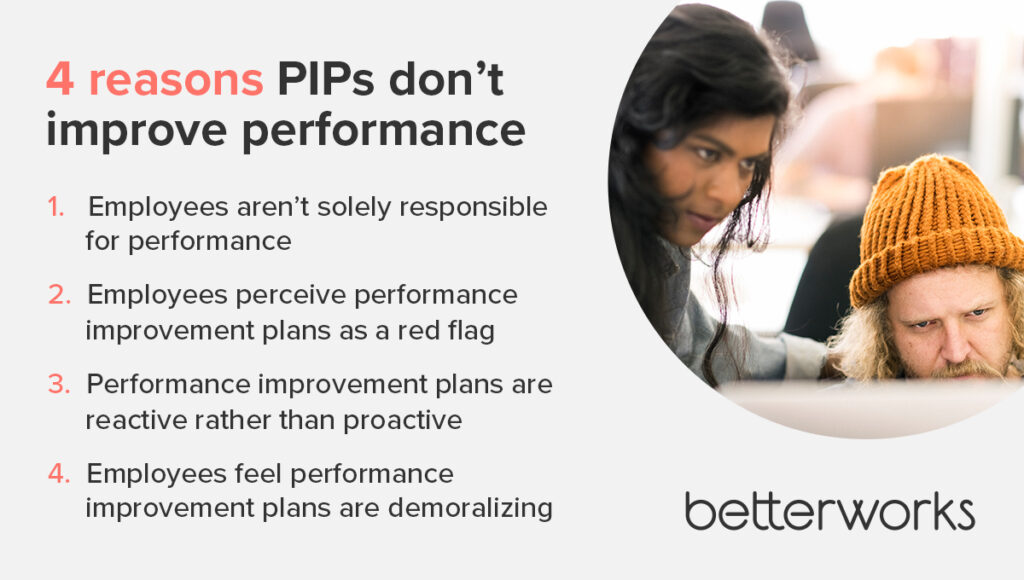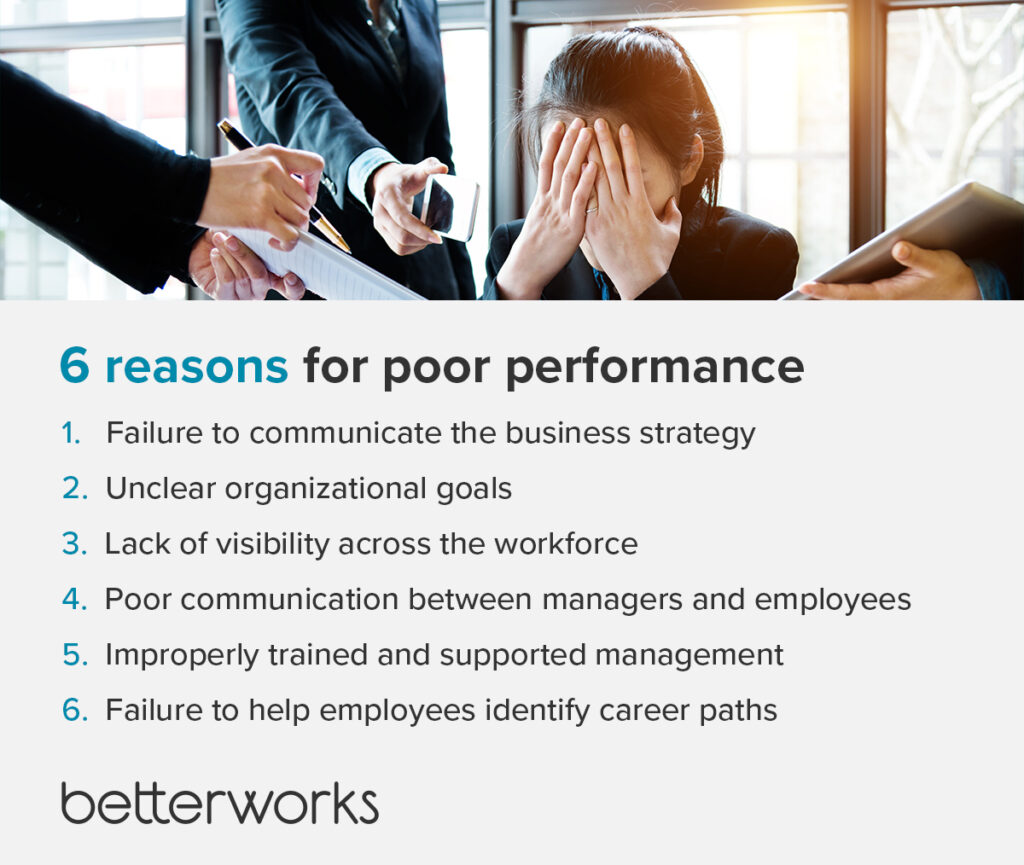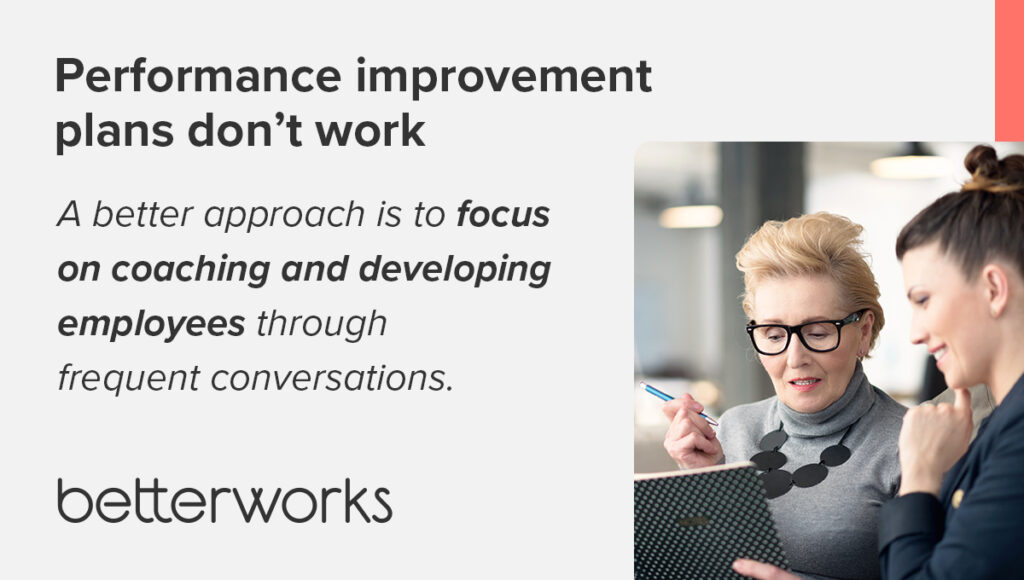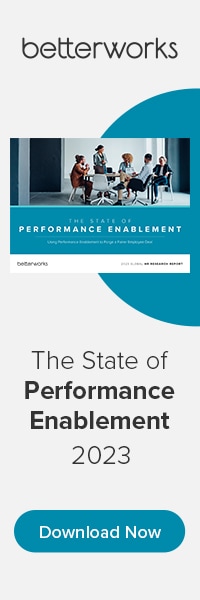Performance improvement plans for employees have been a staple element of performance management for decades. But in all that time, how often have they actually worked?
Most people will tell you that performance improvement plans, or PIPs, are nothing more than the last stop on the way to termination. “Whether you’re on the receiving end, the manager who initiated it, the leader overseeing it, or just an uncomfortable bystander — many people see a PIP as the corporate version of a slow-moving car crash,” said Betterworks CEO Doug Dennerline in an HR.com article. “What should be a last lifeline for an underperforming employee often causes more pain than it solves.”
Like annual performance reviews, PIPs are no longer functional in today’s work climate. Yet they remain a go-to for many people leaders and managers. It’s time to reform how we perceive performance issues so we can address them at the root, not the branches.
Instead of asking how to create a performance improvement plan, let’s explore why PIPs just don’t work — and what’s really driving poor performance in your organization.
Traditional thinking about performance improvement plans
Nominally, PIPs help employees reach their full potential. The idea is to create a targeted action plan for an employee to improve their performance. PIPs are meant to provide the worker with the necessary support and guidance to develop the skills and abilities they need to succeed in the role.
PIPs typically begin with assessing the employee’s current performance. This assessment looks at areas such as attendance, quality of work, communication skills, and any other areas of concern. From there, the manager identifies where an employee fails to meet expectations. Those usually become the targeted areas of improvement.
Next, the manager (overseen by HR) is supposed to collaborate with the employee to create a plan that clearly outlines the goals, actions, and timeline necessary for the employee to reach their desired performance level. The performance improvement process includes regular check-ins and progress reviews. These help the employee view their results while providing accountability for meeting goals.
But PIPs have earned a poor reputation. Most employees believe that being put on a PIP essentially means their employer has decided to push them out. “In theory, PIPs are a chance to make positive change — for everyone,” Dennerline said. “But in reality, the success rate of surviving a PIP is very low and stressful for all involved.”
4 reasons creating a PIP doesn’t improve performance issues
Although the concept of PIPs sounds promising, PIPs rarely move the needle toward better outcomes. They may even cause more damage than good. But how can something designed exclusively to drive performance produce such opposing outcomes?
Check out these four reasons PIPs don’t lead to better performance.
Employees aren’t solely responsible for performance
Rarely is poor performance solely because of the employee. Many other factors can contribute to a decrease in performance, including a lack of resources, inadequate training and support, unclear expectations, or a lack of motivation. “A PIP may be the result of a single employee’s failure — but just as often, it’s a symptom of organizational or managerial shortcomings,” Dennerline said.
If employees aren’t given the proper tools, training, and guidance, they’re unable to work to the best of their abilities.
Because employees aren’t solely responsible for their shortcomings, a plan that treats them as such can come across as accusatory. And because many PIPs ignore the other factors contributing to overall performance, they’re far less likely to be successful than a more holistic approach might be.
Employees perceive PIPs as a red flag
While the intention of PIPs is to help employees improve their performance, the perceived implications can be intimidating. Employees often associate PIPs with disciplinary action and being on the brink of termination, which can lead to feelings of insecurity and fear. The manager-employee relationship suffers, generally coming to a head when the employee opts to leave before their manager can fire them.
Furthermore, when an employee is placed on a PIP, they may feel their co-workers also view them as inadequate or a liability. The employee may feel under constant scrutiny, contributing to feelings of overwhelm and causing them to disengage.
PIPs are reactive rather than proactive
Good managers address performance issues before they become major problems. PIPs, however, are usually implemented after the issue has become serious. This can cause the employee to feel as though they are being unfairly targeted and judged, leading to resentment and a lack of motivation on their part.
Furthermore, reactive PIPs can be too little, too late. By the time they’re implemented, the employee’s performance shortcomings might be too extensive or unfixable, making the PIP essentially useless.
“Rather than last-minute, half-hearted triage, organizations should be stepping up first and proactively addressing the environment that is producing failure,” Dennerline said. Employees want to do more, but they need the right resources and support to perform at their best.
Employees feel PIPs are demoralizing
Another issue that can arise when an employee is placed on a PIP is that they may believe their efforts are being overlooked or undervalued. This can be especially true if the employee believes that they have been working hard and that their efforts aren’t being recognized.
“Rather than promoting improvement, it singles out an individual for their shortcomings without necessarily addressing the root causes of the underperformance, many of which can lie within the organization or with the manager,” Dennerline said.
If the employee feels their work isn’t appreciated, they may be less likely to take the PIP process seriously or put forth the necessary effort to improve.

6 reasons for poor performance
Employees are often blamed for poor performance outcomes, but many factors go into a team’s success or failure. While everyone needs to take responsibility for their actions and work, team performance also depends on the operating environment, available resources, and organizational leadership.
Here are six reasons for poor performance outcomes beyond individual employees.
Failure to communicate the business strategy
If employees aren’t aware of the overall business strategy, they can lose the thread of why their job matters. Feeling as though they’re working in a vacuum can be demotivating — and their performance may suffer.
“If strategic objectives in your organization are prone to shift without clear communication,” Dennerline said, “employees may be left scrambling, leading to widespread confusion, decreased productivity, frustration, and sometimes apathy.”
Unclear organizational goals
Fuzzy goals often lead to confusion among team members. Employees who don’t know what to focus on can struggle to prioritize, feel overwhelmed, and lose focus on important tasks. Without a clear vision of their role in organizational goals, workers might even put their time and energy toward the wrong tasks. Managers might view this as someone not caring or paying attention instead of the truth — they simply aren’t sure which tasks produce the highest value for the business.
Lack of visibility across the workforce
Lack of visibility across an organization can have a detrimental effect on employee performance. Without clear visibility, employees may not be aware of how their goals and tasks influence or intersect with others in the organization. Additionally, employees may struggle to access the resources they need to complete their work, leading to delays or missed deadlines.
“A lack of transparency across the organization can also create an environment of uncertainty, where employees feel like leadership isn’t communicating well — or worse, isn’t holding themselves accountable to the same standards,” Dennerline said. A work environment that feels uncertain can cause employees to disengage and disconnect.
“A shift in perspective may be necessary — moving from viewing underperforming employees as the sole problem to acknowledging bigger potential organizational and managerial shortcomings — and solving them.”
Doug Dennerline, CEO, Betterworks
Poor communication between managers and employees
Miscommunication between managers and team members can lead to errors, unintended outcomes, and poor performance. This miscommunication can include task-specific directions or bigger-picture performance expectations. When managers can’t provide that clarity, employees may become confused or uncertain about what to do.
Manager and employee conversations have to go both ways if employees are to feel like they have a voice. Performance and morale can worsen when employees believe their perspectives aren’t valued or that they don’t have recourse.
Improperly trained and supported management
Without strong leadership, employees may become disengaged, less productive, and less motivated. The way we’ve traditionally thought about the manager’s role doesn’t help. Managers are often promoted for being top individual performers, and many are expected to micromanage employee tasks. But today’s managers need to connect with and support their people as they work toward performance goals.
Insights from RedThread Research suggest “that managers need to 1) get comfortable with being transparent, 2) help identify tasks that drive goals, 3) help employees stay on track, and 4) remove barriers to work,” Dennerline said.
But this ability doesn’t come naturally to everyone, and managers need training and support from HR to achieve these priorities.
Failure to help employees identify career paths
Failing to help employees identify career paths can have a negative impact on overall employee performance. Your workers can stagnate if they aren’t supported by employers in their professional growth.
Team members need to see clear options for their professional growth and development. If internal mobility isn’t possible, employees will be less inspired to achieve their potential and less successful in their overall performance.

Performance improvement plans for employees are out. What’s next?
Performance improvement plans for employees can be an intimidating and disempowering process, and they often fail to address the root causes or provide long-term solutions. But if there’s no such thing as an effective PIP, how can you help team members close gaps in performance?
A better approach is to focus on coaching and developing employees through frequent conversations.
Ongoing coaching and development help employees understand and address skill gaps, recognize and build on their strengths, and create a plan for achieving their goals. The coaching-and-conversations approach also provides a supportive and collaborative environment that encourages employees to ask questions and take ownership of their development. When HR leaders help managers foster a coaching mindset, they contribute to a culture of continuous learning and growth.

Performance improvement plans don’t work
“Effective performance management isn’t about putting employees on trial — it’s about equipping them with the tools they need to succeed and grow,” Dennerline said.
There’s no place for outdated performance improvement plans for employees in the era of coaching and conversations. By addressing system-wide barriers to performance, you can leave PIPs in the past where they belong.
Want to learn more? Check out Betterworks’ 2023 State of Performance Enablement report.
Drive change that matters







